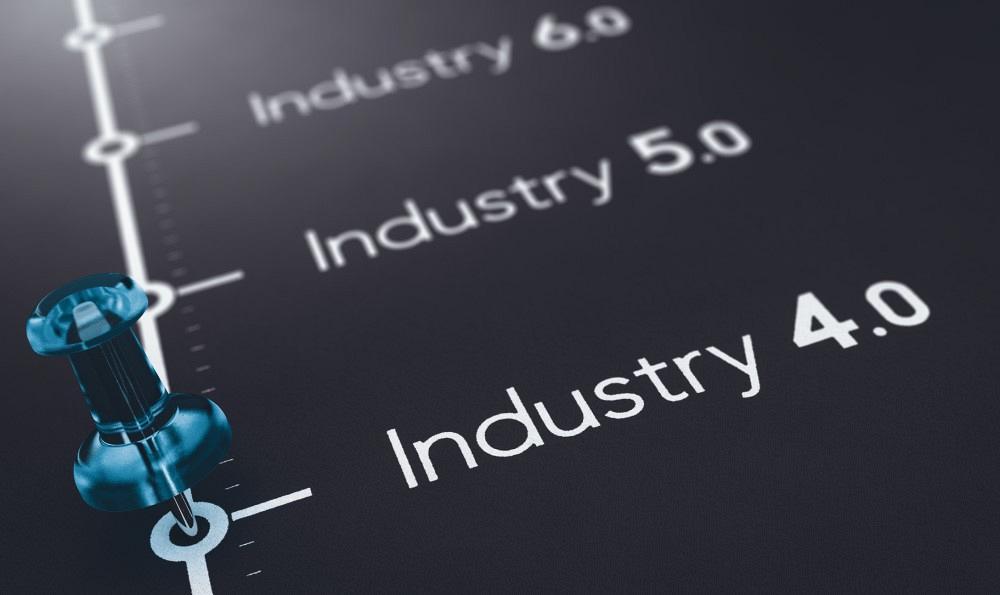- FMA
- The Fabricator
- FABTECH
- Canadian Metalworking
Our Publications
Categories
- Additive Manufacturing
- Aluminum Welding
- Arc Welding
- Assembly and Joining
- Automation and Robotics
- Bending and Forming
- Consumables
- Cutting and Weld Prep
- Electric Vehicles
- En Español
- Finishing
- Hydroforming
- Laser Cutting
- Laser Welding
- Machining
- Manufacturing Software
- Materials Handling
- Metals/Materials
- Oxyfuel Cutting
- Plasma Cutting
- Power Tools
- Punching and Other Holemaking
- Roll Forming
- Safety
- Sawing
- Shearing
- Shop Management
- Testing and Measuring
- Tube and Pipe Fabrication
- Tube and Pipe Production
- Waterjet Cutting
Industry Directory
Webcasts
Podcasts
FAB 40
Advertise
Subscribe
Account Login
Search
Whaaaat?! Are additive manufacturers ready for Industry 5.0?
Although Industry 4.0 has yet to fully take root, some are already pitching Industry 5.0
- By Kip Hanson
- October 8, 2021

When Industry 5.0 eventually becomes a reality, additive manufacturing must play a key role, writes Kip Hanson. Getty Images
Let’s face it, Industry 4.0 remains underutilized. Most manufacturers—especially the smaller ones—are too busy getting parts out the door to spend much time thinking about the digital twin, augmented reality, machine learning, and all the rest. And that’s a shame because Industry 4.0 promises all manner of efficiency gains.
Granted, automation is picking up in a big way, but much of that is due to the ongoing labor shortage, a situation made worse by COVID. And 3D printing—which I would argue marks the start of Industry 4.0—is gaining significant steam in shops large and small. But the fact remains that we’ve barely scratched the surface of the Fourth Industrial Revolution.
That’s why my inner voice let out a giant “WTF” when I stumbled across an article titled “The Curious Case of Industry 5.0.” Really? We don’t have a good start on Industry 4.0 and now you want to throw even more technical stuff at manufacturers?
The article’s author is Belgian human-rights attorney Katerina Yordanova. No offense, but I was skeptical. What does she know about manufacturing? I thought.
So I immediately set about Googling the origin of this ridiculous notion, which led me to an article on the official EU website. It states that Industry 5.0 “complements the existing Industry 4.0 approach by specifically putting research and innovation at the service of the transition to a sustainable, human-centric and resilient European industry.”
After some calm reflection, I realized that Yordanova and the EU might be onto something, and that additive manufacturing checks all of these boxes:
• Because there’s little waste with 3D printing, it’s more sustainable and eco-friendly than traditional manufacturing practices.
• It’s human-centric, in that it brings manufacturing within reach of far more people, and can easily make products that are customized to the end user.
• Because the supply chain is relatively short with 3D printing and it offers the promise of localized manufacturing, it is also very resilient.
Additional Googling taught me that Industry 5.0 is not only a big thing, but has even more moving pieces than its predecessor. Collaborative manufacturing, mass customization, cyber-physical cognitive systems, personalizable autonomous manufacturing—these are just a few of the attributes that I’ve seen mentioned thus far. More are sure to come.
It’s all cool stuff, to be sure, and it’ll be fun to watch it all unfold. Still, I would have picked a different name than Industry 5.0.
Any ideas?
About the Author

Kip Hanson
About the Publication
- Podcasting
- Podcast:
- The Fabricator Podcast
- Published:
- 04/09/2024
- Running Time:
- 63:55
In this podcast episode, Brian Steel, CEO of Cadrex Manufacturing, discusses the challenges of acquiring, merging, and integrating...
- Trending Articles
- Industry Events
16th Annual Safety Conference
- April 30 - May 1, 2024
- Elgin,
Pipe and Tube Conference
- May 21 - 22, 2024
- Omaha, NE
World-Class Roll Forming Workshop
- June 5 - 6, 2024
- Louisville, KY
Advanced Laser Application Workshop
- June 25 - 27, 2024
- Novi, MI


























